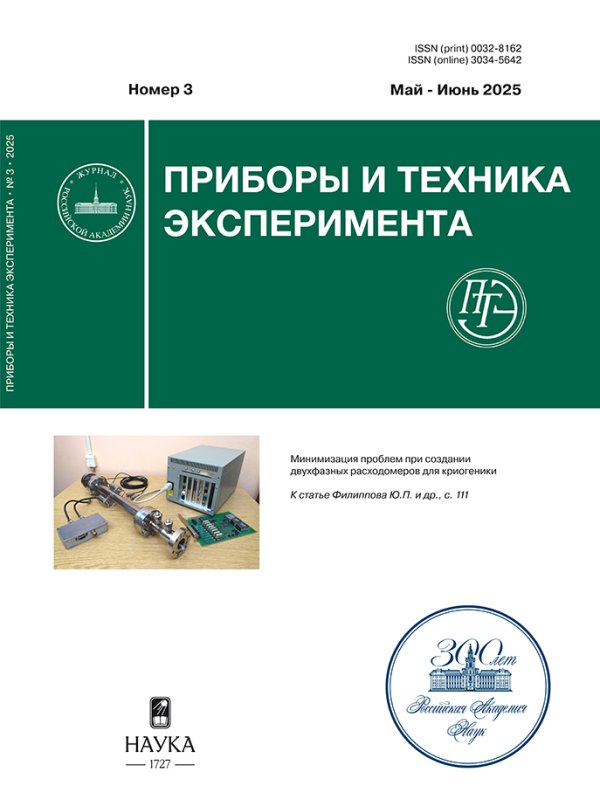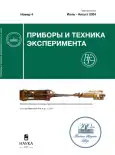Применение тонких сцинтилляционных счетчиков в детекторах частиц (обзор)
- Авторы: Бреховских В.В.1, Горин А.М.1, Дятченко В.А.1, Евдокимов С.В.1, Зайцев А.А.2, Изучеев В.И.1, Медынский М.В.1, Рыкалин В.И.1, Садовский С.А.1, Шангараев А.А.1
-
Учреждения:
- Институт физики высоких энергий им. А.А. Логунова Национального исследовательского центра “Курчатовский институт”
- Объединенный институт ядерных исследований
- Выпуск: № 4 (2024)
- Страницы: 5-14
- Раздел: Статьи
- URL: https://gynecology.orscience.ru/0032-8162/article/view/681064
- DOI: https://doi.org/10.31857/S0032816224040019
- EDN: https://elibrary.ru/NZPSXG
- ID: 681064
Цитировать
Полный текст
Аннотация
Рассматриваются конструкции и характеристики тонких сцинтилляционных счетчиков толщиной не более нескольких мм с большой геометрической апертурой. Такие счетчики с высоким световыходом и, соответственно, с высокой эффективностью регистрации заряженных частиц находят широкое применение в ядерной физике и физике частиц, а также в установках контроля бета-загрязнений одежды и различных предметов посредством выделения сигналов от низкоэнергетических электронов на фоне гамма-излучения. В этих применениях именно минимальная толщина сцинтиллятора при необходимых больших геометрических размерах детектора определяет высокую эффективность счетчиков в указанных экспериментах и установках контроля бета-загрязнений.
Полный текст
Об авторах
В. В. Бреховских
Институт физики высоких энергий им. А.А. Логунова Национального исследовательского центра “Курчатовский институт”
Автор, ответственный за переписку.
Email: brekhovs@ihep.ru
Россия, Протвино
А. М. Горин
Институт физики высоких энергий им. А.А. Логунова Национального исследовательского центра “Курчатовский институт”
Email: brekhovs@ihep.ru
Россия, Протвино
В. А. Дятченко
Институт физики высоких энергий им. А.А. Логунова Национального исследовательского центра “Курчатовский институт”
Email: brekhovs@ihep.ru
Россия, Протвино
С. В. Евдокимов
Институт физики высоких энергий им. А.А. Логунова Национального исследовательского центра “Курчатовский институт”
Email: brekhovs@ihep.ru
Россия, Протвино
А. А. Зайцев
Объединенный институт ядерных исследований
Email: brekhovs@ihep.ru
Россия, Дубна
В. И. Изучеев
Институт физики высоких энергий им. А.А. Логунова Национального исследовательского центра “Курчатовский институт”
Email: brekhovs@ihep.ru
Россия, Протвино
М. В. Медынский
Институт физики высоких энергий им. А.А. Логунова Национального исследовательского центра “Курчатовский институт”
Email: brekhovs@ihep.ru
Россия, Протвино
В. И. Рыкалин
Институт физики высоких энергий им. А.А. Логунова Национального исследовательского центра “Курчатовский институт”
Email: brekhovs@ihep.ru
Россия, Протвино
С. А. Садовский
Институт физики высоких энергий им. А.А. Логунова Национального исследовательского центра “Курчатовский институт”
Email: brekhovs@ihep.ru
Россия, Протвино
А. А. Шангараев
Институт физики высоких энергий им. А.А. Логунова Национального исследовательского центра “Курчатовский институт”
Email: brekhovs@ihep.ru
Россия, Протвино
Список литературы
- http://www.oka.ihep.su/
- Боголюбский М.Ю., Евдокимов С.В., Изучеев В.И., Паталаха Д.И., Полищук Б.В., Садовский С.А., Соловьев А.С., Столповский1 М.В., Харлов Ю.В., Кузьмин Н.А., Обудовский В.П., Петухов Ю.П., Сычков С.Я. // ЯФ. 2013. Т. 76. № 11. С. 1389.
- https://doi.org/10.7868/S0044002713110044
- Евдокимов С.В., Изучеев В.И., Кондратюк Е.С., Полищук Б.В., Садовский С.А., Харлов Ю.В., Шангараев А.А. // Письма в ЖЭТФ. 2021. Т. 113. № 5. С. 291.
- https://doi.org/10.31857/S1234567821050013
- Горин А.М., Евдокимов С.В., Зайцев А.А., Изучеев В.И., Полищук Б.В., Романишин К.А., Рыкалин В.И., Садовский С.А., Харлов Ю.В., Шангараев А.А. // Письма в ЖЭТФ. 2023. Т. 118. № 9. С. 629.
- https://doi.org/10.31857/S1234567823210012
- Горин А.М., Евдокимов С.В., Зайцев А.А., Изучеев В.И., Кондратюк Е.С., Полищук Б.В., Рыкалин В.И., Садовский С.А., Харлов Ю.В., Шангараев А.А. // Известия РАН. Серия физическая. 2023. Т. 87. № 8. С. 1109. https://doi.org/10.31857/S0367676523701995
- Рыкалин В.И., Рахматов В.Е., Соловьев Ю.А. // ПТЭ. 1993. № 2. С.243.
- https://cdn.standards.iteh.ai/samples/101010/4e369282c60744eb80a7f64c8679aa52/IEC-61098-2023.pdf
- Gorin A., Dyatchenko V., Kovalev V. // Nuclear.Inst. and Methods in Physics Research A. 2020. V. 952 P. 162129.
- https://eos.su/ru/products-tech/products/silikonovye-kompaundy-siel.html
- Рыкалин В.И., Медынский М.В., Джорджадзе В.П., Бицадзе Г. С. РФ Патент. RU2607518C1, 2017.
- https://ru.wikipedia.org/wiki/MINOS
- https://atlas.cern.ch/
- https://www.bnl.gov/rhic/export1/phenix/www/phenix_bnl.html
- https://www.manualslib.com/manual/2056163/Sensl-C-Series.html
- Buzhan P., Karakash A. // J. Phys.: Conf. Ser. 2020. V. 1689. P. 012011.
- https://doi.org/10.1088/1742-6596/1689/1/012011
- https://www.kuraray.com/uploads/5a717515df6f5/PR0150_psf01.pdf
- Дулов Е.Н., Воронина Е.В., Масленникова А.Е., Бикчантаев М.М. Бета-спектроскопия: регистрация спектров бета-частиц, прохождение бета-частиц через вещество. Препринт. Казань: Казанский федеральный университет, 2013. https://kpfu.ru/portal/docs/F1590203643/Beta_LAST_4DAT.pdf
- https://www.pe2bz.philpem.me.uk/Comm01/-%20-%20Ion-Photon-RF/-%20-%20Scintillation/Site-001/Crystals/CastPlastic/bc408.htm
- https://wiki.jlab.org/ciswiki/images/4/49/EJ-200.pdf
Дополнительные файлы
























